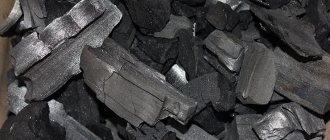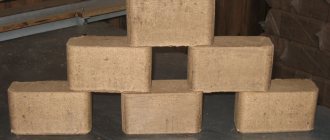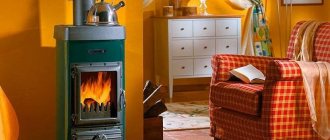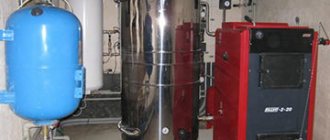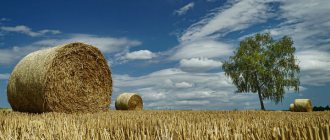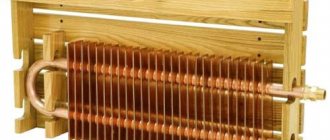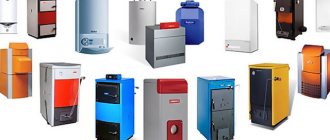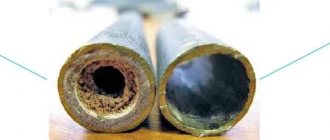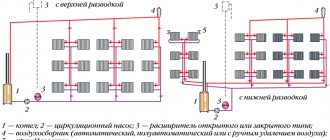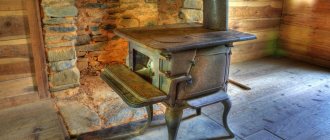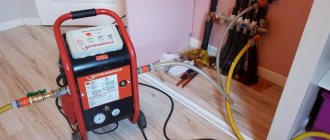Since ancient times, the population heated stoves with coal and wood to heat their homes. However, progress does not stand still and humanity has come a long way in all spheres of its life. The synthesis of scientific developments and modern, high-tech production has made it possible to create a new type of solid fuel - briquettes for heating.
For their production, various raw materials are used - peat, waste from the wood processing industry (sawdust, shavings), agriculture (straw, husks), residues from coal production. The scope of application of briquetted fuel is quite large and varied: heating saunas, industrial and residential premises, heating greenhouses, heating coolant in boiler rooms.
Technology
The most suitable raw material for the production of peat briquettes is low-grade peat, which does not contain any by-products and consists of fine particles.
Fuel bricks from such low-lying peat bog are high-calorie and dense, dark brown, almost black in color.
It is important to remember: peat fuel briquettes are used exclusively for boilers operating on solid fuel.
The technology for producing peat fuel is quite simple and is as follows:
- peat chips are extracted by milling the upper layer of caustobiolite;
- using drying and turning, the crushed raw materials are brought to the required moisture content;
- Then the dried products are stored in piles.
The next production stage is drying the semi-finished product to 9-12 percent humidity. Then the raw materials are separated and sent to the press for briquetting. High pressure and temperature conditions of 200-350 degrees Celsius contribute to the melting of workpieces, increasing their strength.
The result is a peat briquette with certain parameters:
- briquette size – 150 x 70 x 60 mm;
- mass fraction of sulfur – within 0.2%;
- content of ash impurities – no more than 15%;
- standard humidity – within 18%;
- calorific value – from 4500 Kcal/kg.
This briquetted fuel is popular among private owners and is used in furnaces and boilers with controlled air supply. And the ash obtained from the combustion of peat briquettes, according to reviews from amateur gardeners, is an ideal mineral fertilizer with a high content of potassium and phosphorus.
You may be interested in an article on how to connect a gas boiler. You can read about the boiler room in a private house in this article.
In addition to the milling method of extracting peat raw materials, there is also a less expensive and simple method for harvesting sod peat. With the help of special attachments to the tractor, compaction takes place in areas where high-moor peat is being developed.
The completed briquettes are extruded directly onto the field and dried under natural conditions. This type of briquette is called “peat firewood”. The disadvantages of peat fields include low heat transfer and variability of consumer criteria. In most cases, boiler houses operating on solid fuel use peat firewood.
Do it yourself or to order?
Owners of country houses in most cases are enterprising people and can build anything with their own hands, but is it necessary to do this?
Making custom cabinets under the stairs is more expensive than doing the design yourself. But in this case, the owner will receive not only a high-quality piece of furniture, created taking into account all the possibilities of space and wishes, but also a guarantee for the product.
Advantages and disadvantages
Peat briquettes for heating have a number of undeniable advantages, namely:
- safety of use - no sparks are formed, combustion does not emit carcinogenic and toxic fumes;
- the combustible qualities of peat fuel are maintained for several years;
- peat blocks are a natural bioproduct with minimal additives;
- storage requires a significantly smaller area compared to traditional types of fuel (coal, firewood);
- Wholesale purchase of peat briquettes is much cheaper than purchase of diesel fuel, gas, coal;
- The calorific value of peat briquettes occupies an intermediate position between wood and black coal.
But one drawback still exists. It is highly flammable. Therefore, for fire safety reasons, peat fuel is strictly prohibited from being left near fire or heating devices.
How to compare the cost of fuel briquettes with the cost of firewood?
As you know, firewood is most often sold in bulk or stacked.
If you received stacked firewood on pallets, then a cubic meter of such firewood is equivalent to 0.7 cubic meters in terms of dense wood. If you were brought firewood in bulk in the back of a truck, then with a firewood length of 30-35 cm, the cubic meter will contain only 52% dense wood. In other words, to compare the cost of bulk firewood for dense wood with the cost of fuel briquettes, the cost of firewood should be doubled.
So, let's compare prices. Bulk firewood in the Leningrad region costs 1,500-1,600 rubles. per cubic meter. In terms of dense wood, a cubic meter of firewood will cost 3,000-3,200 rubles. In neighboring areas, firewood can cost about one and a half times less. Thus, a cubic meter of Ruf type fuel briquettes costs the buyer, depending on the area, 2-3 times more expensive than firewood.
We decided to find out whether such a difference in price is worth the stated advertising advantages of fuel briquettes in the form of convenience, increased heat transfer and increased burning time of fuel briquettes. We conducted an amateur experiment, which, although it does not claim to be scientifically reliable, can clarify some aspects of the use of fuel briquettes instead of firewood.
Equipment for the production of pellets
The main role in the technological process is played by the machine for the production of pellets, which is also the most difficult to manufacture. It will not be possible to completely make a granulator with your own hands, since to manufacture the matrix and rollers you need metalworking machines - lathe, milling, drilling and grinding. So there are 2 options: buy a ready-made matrix-roller pair or order it from the craftsmen.
The matrix pair for the pellet press should be made of high-carbon steel St45 or St50, or even better alloyed with manganese HVG or 65G. Moreover, after processing, the parts must undergo a hardening process in order to achieve a hardness of 58-60 units. To make a matrix for a granulator, you need to maintain all the dimensions indicated in the diagram:
You can use simpler steel for the roller shaft - St3, 10 or 20, and there is no need to harden it. But the working parts of the rolls must be made from the above grades, followed by hardening, and then mounted on the shaft through bearings, as shown in the photo below.
Now let’s talk about what you can use to assemble the housing and drive for a homemade pellet granulator. The matrix pair must be placed inside a cylindrical body, which is made of sheet metal or a pipe with an internal diameter of 200 mm. The drive shaft is inserted into the matrix hole and secured with a key, and below you need to make a platform for the finished pellets. The assembly diagram of the pellet granulator is shown in detail in the video:
To rotate the shaft, you need to take an electric motor with a power of at least 5 kW, and the drive can be assembled from an old automobile gearbox from a Volga or Moskvich with part of the rear axle. On the side where the driveshaft is to be connected to the gearbox, a pulley is installed, rotated by a belt drive from an electric motor. Both units are attached to the same frame, as described in the video:
Note. In this design of a press for making pellets with your own hands, the shaft rotates the matrix, and the rollers remain stationary. The pulleys must be selected so that its rotation speed is no more than 250 rpm.
Homemade crusher
It’s good when it is possible to obtain good small wood waste from some production for pressing pellets. If this waste contains small branches or slabs, then to grind them you will need additional equipment - a crusher. There are many homemade structures, but most of them cut wood into chips that are too large, from which it is impossible to make pellets at home.
We present to your attention a simple wood waste crusher made from 3 dozen circular saws for a circular saw with carbide tips. All saws are mounted on one shaft in such a way that the teeth of each subsequent one are slightly offset relative to the previous one. A pulley and 2 bearings at the edges are placed on the same shaft, after which the entire structure is fixed to a frame made of angles or pipes.
As you understand, the productivity of the unit is low, but such a wood waste crusher will produce sawdust suitable for the production of pellets. If you have a circular saw on your farm, then the chopper can be adapted to its frame, as is done in the photo:
Sawdust dryer
To ensure that home-made wood pellets do not crumble at the exit from the granulator matrix, it is necessary to ensure the minimum moisture content of the raw materials. In industry, this occurs in various drying chambers. At home, craftsmen have adapted to assembling drum-type sawdust dryers, since their design is the simplest, as shown in the diagram:
Several iron barrels, welded to one another, are mounted on a frame with a slight inclination to one side. Blades are welded from the inside to the walls of the barrels to mix the raw materials. On one side, hot air is supplied inside such an improvised drum using a gas or electric heat gun. The rotation of the drum is carried out by an electric motor through a gearbox or a reduction belt drive.
Briquette composition
- Wood shavings. Briquettes made from it have a good specific heat of combustion, but leave behind quite a lot of ash, similar to the wood from which they are made;
- Sunflower husk. Such briquettes provide the highest calorific value due to the oil they contain, which has good energy potential. However, it must be taken into account that briquettes made from sunflower seeds more intensively pollute the chimney with soot;
- Straw. It is considered a good raw material for pellets because it has low cost, good heat transfer and average ash content;
- Tyrsa. Briquettes made from this perennial plant burn well. The specific heat of their combustion is higher than that of straw pellets, and they leave less ash;
- Rice husk. The most budget-friendly option for producing fuel briquettes, which have low calorific value and high ash content. But after processing rice, a lot of husk remains, so this type of raw material should be used and is an alternative.
